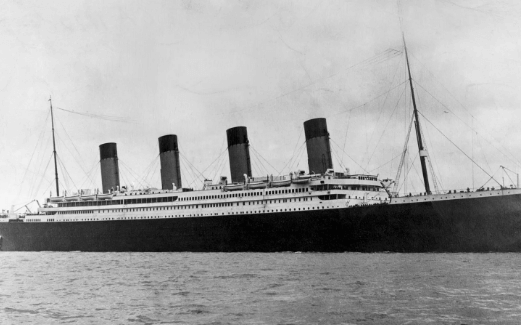
Ship:Gojvqmivvri= Titanic
The Titanic stands as a monumental testament to early 20th-century maritime engineering, combining luxury with revolutionary design features aimed at ensuring safety. Despite its celebrated launch in 1912, the ship’s maiden voyage culminated in an unforeseen tragedy, raising pressing questions about the limits of human innovation and the inherent risks of ambition. As we explore the intricacies of its construction and the cultural ramifications of its legacy, one must consider how this singular event reshaped perceptions of technology and safety in an increasingly complex world. What lessons remain pertinent today?
The Construction of Titanic
Amidst the bustling shipyards of early 20th-century Belfast, the construction of the RMS Titanic commenced in 1909, marking a significant milestone in maritime engineering and luxury.
The construction timeline was ambitious, facing numerous engineering challenges, including the need for innovative materials and techniques.
Each phase required meticulous planning, reflecting the era’s aspirations for grandeur and safety in sea travel, ultimately shaping maritime history.
See also: Screen:Rglnvhquq3w= Black
Design Features and Innovations
The design features and innovations of the RMS Titanic epitomized the pinnacle of early 20th-century engineering and luxury.
The ship showcased luxurious amenities, including opulent dining rooms and lavish suites, catering to the elite.
Additionally, groundbreaking safety measures, such as watertight compartments and advanced lifeboat designs, were incorporated, reflecting a commitment to passenger well-being.
This intricate balance of elegance and safety defined Titanic’s legacy.
The Fateful Voyage
On April 10, 1912, the RMS Titanic embarked on its maiden voyage from Southampton to New York City, a journey laden with high expectations and grandeur.
Despite the luxurious passenger experiences onboard, iceberg warnings were disregarded.
The ship’s perceived invincibility overshadowed prudent navigation, ultimately leading to tragedy.
This fateful voyage, marked by hubris, serves as a stark reminder of nature’s unpredictable power.
Titanic’s Cultural Impact
Titanic’s cultural impact is profound and multifaceted, extending far beyond the tragic events of its sinking.
The ship symbolizes human ambition and hubris, often depicted in various film adaptations that explore themes of love, loss, and social class.
These narratives resonate deeply, inviting audiences to reflect on the fragility of life and the consequences of technological advancement, ensuring Titanic’s enduring legacy in popular culture.
Conclusion
The Titanic stands as a testament to human ingenuity and a cautionary tale of overconfidence. Its construction showcased unparalleled craftsmanship, its design integrated innovative safety features, and its tragic voyage underscored the unpredictability of nature. The cultural impact of Titanic reverberates through literature, film, and collective memory, illustrating the enduring fascination with its story. Ultimately, the legacy of Titanic serves as a reminder of ambition’s dual nature: capable of both extraordinary achievement and profound loss.






